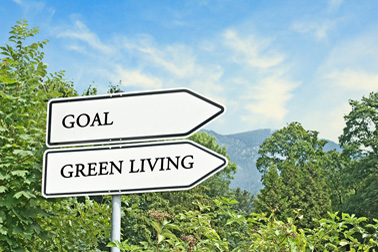
By TreeLiving
Why do we have a global ecological crisis looming? A big part of it is that we’ve turned into a consumer society on a massive scale and our carbon footprint is many times the size of our grandparents’. You don’t have to turn the clock back a hundred years but you can pick up on some effective, economical tips on how to be green from days gone by. After all, how did people get by before all the gadgets and wonder products we’re urged to buy today?
One of the greenest and money-saving things you can do is to grow your own, like most people used to do. They knew how to be green back then. Why spend a dollar on parsley or coriander at the store when you can grow it on your windowsill for next to nothing, with almost no carbon footprint implications? Whatever you can grow yourself is worth a go. You can grow swiss chard, cherry tomatoes, salad greens and even small citrus trees on even a tiny balcony. It’s green, organic and cheap too.
Your yard or patio, big or small, is full of green potential, in more ways than one. Forget bunches of flowers – grow your own, for a thoughtful gift and home enhancer. Try home made pot pourri or fresh flowers from the garden as a chemical free substitute for pricey air fresheners. NASA researchers have proved that some indoor plants are healthy as well as attractive, since they actually clean the air of various chemicals. That’s air purification with no electricity bills or other costs attached.
Green cleaners are another area where you can save money. There are some great specialist eco products available but there are also green cleaners you can make yourself. Household substances like baking soda (bicarbonate of soda) and vinegar are great gentle cleaners that won’t cost you much to make. In the same vein, olive oil and lemon juice makes a good, green furniture polish.
Eco-technology has come up with all sorts of clever stuff for green homes of the future, but we can’t all afford to install solar panels and eco toilets. The good news for anyone exploring how to be green is that there’s a lot you can do for little or no cost. Our grandparents knew all about the good old brick in the toilet cistern trick to save water. Little things, like placing your refrigerator where it’s out of direct sunlight, can make a big difference.
In fact, behavioral changes (like switching off lights and not leaving devices on standby) are essential strategies. Knowing how to be green is about thinking laterally and intelligently. You don’t have to blow the budget on the latest eco hi-tech to have an eco-friendly home.

